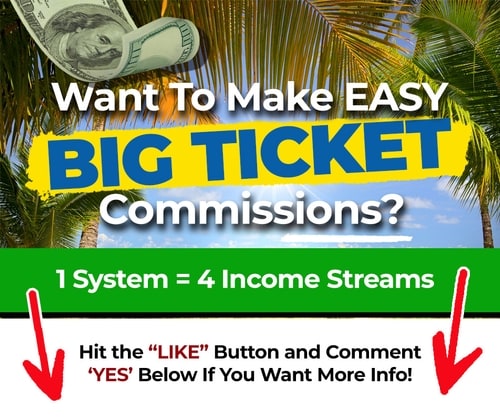As you can imagine, people who sell products face to face can lose sales by making all too common mistakes. And marketing online isn’t all that different from going belly to belly with a customer. You, too, can make similar mistakes that might already be costing you dearly.
What are the consequences of just one mistake? If you sell a $47 product and you fix one mistake that creates one more sale per day, you’ve just given your business a $17,155 per year gross raise. Not bad. Don’t fix the mistake and you’ll continue to make $17,155 LESS than you could have.
Here are 12 mistakes salespeople make, and the corresponding Internet marketing mistake committed by hapless online marketers everywhere. Score yourself and see how many mistakes you are currently guilty of making:
1. Multitasking. The salesperson is making a presentation when s/he gets a voice message, a call, a text, or an interruption of any kind. That’s bad enough – what happens when the salesperson decides to actually check that message or take that call? More often than not they’ve just lost the sale.
The lesson for online marketers: Don’t allow distractions of any kind inside your sales process. When you’re promoting a product, don’t place anything else on that sales page or in that email that distracts your prospect from buying your product.
2. Not paying attention. The advantage of selling in person is you can see how the prospect is reacting to the sales message. If the salesperson misses clues, they may also miss the sale.
The lesson for online marketers: Listen to your audience. You can do this by ASKING what they want, reading what they say in the comments on your blog, or better yet – interacting with them in a forum or live chat on your website.
3. Not knowing your customers. This goes beyond listening – this is knowing the real reason why they buy. For example, a salesperson selling a weight loss plan will be told by a customer that they want to be healthier, but the REAL reason that customer is looking at the plan is because she’s afraid she’ll lose her spouse if she doesn’t lose the weight.
The lesson for online marketers: Dig deeper. Find out the real motivations behind your customer’s actions. Get inside their head and walk a mile in their shoes. Create customer profiles just as though they were real people and find out what’s truly pushing their buttons and the real reasons, they’ll buy your product or service.
4. Not knowing the product. Salespeople can’t adequately present a product unless they know everything there is to know about the product and about the competition.
The lesson for online marketers: You’ll never be able to write truly compelling copy unless you know your product along with your features and benefits inside and out.
5. Not handling objections. The customer has a question or an objection the salesperson can’t answer – what happens? Often the sale is lost right then and there. But if the salesperson can handle objections, the sale is won.
The lesson for online marketers: As an online marketer, you’ve got to anticipate and handle objections before they even occur. What are the reasons your prospect is likely to hesitate? What are your customers’ fears? Worries? Objections? Bring them up and answer them right in your sales copy or sales video and your sales will increase.
6. Presenting features and forgetting benefits. No doubt you already know the importance of presenting benefits, not just features. For example, a feature of steak is nice marbling, the corresponding benefit is melt in your mouth tenderness. Relying on features only to make a sale seldom works because the customer’s senses and emotions are not involved.
The lesson for online marketers: This one’s easy – don’t assume your prospect will know the benefits of your features. Instead, clearly present the benefits of your product in such a way that the prospect can clearly imagine having those benefits for himself.
7. Not building in value. When a salesperson can show that the price of the product is a mere pittance compared with the VALUE of the product, the sale is won. Sadly, many salespeople do a lousy job of this.
For example, a $500 day at the spa might seem expensive, but if it means more energy, more health, a more youthful appearance, feeling terrific, feeling invigorated, being envied by your friends, having an amazing day you won’t forget, etc., the $500 can seem worth it.
The lesson for online marketers: Think of it as asking the prospect to pay pennies to get dollars – who will say no to that? Now find a way to present your product or service where the value is so much greater than the price, the prospect would be crazy to say no.
8. Focusing too much on price. Having a low price can certainly help make the sale, but if a salesperson is focused exclusively on price, he’ll lose sales to both cheaper competitors and better salespeople. A good salesperson focuses on the benefits and is able to convey to the prospect that it’s wise to invest in the best and often a waste to buy the cheapest.
The lesson for online marketers: While you can make a lot of sales of $7 products, sometimes you can make even more sales if you increase the price. Remember, many people do believe that they get what they pay for. If you’re offering the moon for a fistful of quarters, you’ll lose sales because people will believe your product is only as good as your price is high.
9. Not asking for the sale. Countless sales are lost simply because the salesperson is afraid to ask for the sale. Imagine you’re a salesperson – you get a lead, you contact that lead several times before finally getting an appointment, you drive to their office, you wait in the lobby, you finally get to make your presentation, and you walk away empty handed, all because you didn’t ask for the sale. Does that sound far-fetched? The fact is it happens every minute of every day somewhere in the world.
The lesson for online marketers: ASK for the sale. Tell them to click the link and make the investment that’s going to make them happy for a long time to come. Tell them and then tell them again. It’s okay – they WANT you to guide them, so do it.
10. Not asking (again) for the sale. The salesperson makes the presentation, asks for the sale, but the customer says no. Does that mean it’s over? Only if the salesperson is new on the job. Seasoned pros know that you ask for the sale numerous times throughout the presentation. And if the customer still says no? Then you follow up later and see if they’re ready yet.
The lesson for online marketers: Be closing all the time. Write your copy as though it’s a done deal that the prospect will become a customer. Ask for the sale, ask for it again, and if they don’t buy, follow up by email. You never know when you’re going to either tell them the right thing or hit them at the right time to get that magical “yes.”
11. Not following up with the customer after the sale is made. The salesperson is walking on air, she’s so happy she made the sale. Time to move on to the next prospect, right? Well, yes and no. While you always want to be looking for new customers, you also want to take care of and service your existing customers. Repeat business is far easier to get than the initial sale, but you’ve still got to earn it.
The lesson for online marketers: Follow up. Send a series of emails filled with tips on how to get the most out of the product. Continue to build the relationship and earn their trust and instead of a onetime sale, you can get a customer for life.
12. Not following up even if a sale isn’t made. The salesperson has begun to build a relationship with this prospect, but the prospect buys elsewhere. Now what? Should the salesperson forget the prospect? 99% of them do. But whatever their product is, the customer may be dissatisfied with their purchase or may want to purchase another product in the future.
Either way, it pays to stay in touch with that prospect even if they don’t buy. Sometimes staying in touch pays off in surprising ways, too. A prospect who didn’t think your product was right for her may think it’s perfect for a friend or colleague.
The lesson for online marketers: People visit your sales page and don’t buy. You follow up with them a dozen times and they still don’t buy your product. But that doesn’t mean they might not be a good prospect for a different product or might even recommend you to a friend. Always leave the door open and continue to build the relationship.
So, what was your score? If you’re currently making 3 of these mistakes or less, pat yourself on the back because you’re doing far better than average. Now go fix those mistakes and close even more sales.
Making 4 to 6 mistakes? Don’t feel bad – you’re not alone. Choose one thing to correct and do it right now, then commit to fixing the rest within the next 14 days.
Committing more than 6 of these mistakes? It’s time to face facts – you need to make some major changes or you’re never going to become a full-time online marketer. Sit down and write out a plan for rectifying your situation, then put it to work. And take heart – even the best marketers made some major mistakes in the beginning. The important thing is that you never give up, and that you not only learn, but you also implement what you learn as quickly as possible.










